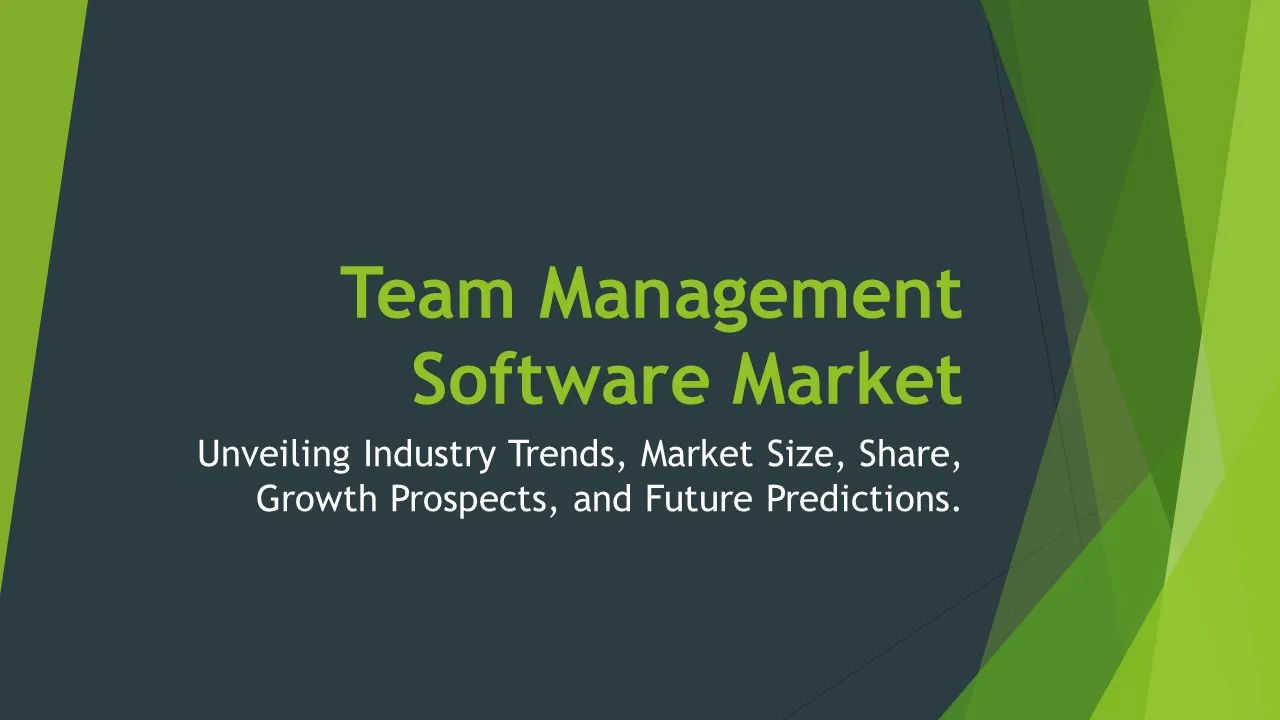Chemical Software
Chemical Software Market Segments - by Product Type (Process Simulation Software, Chemical Inventory Management Software, Laboratory Information Management System, Chemical Engineering Design Software, Safety Compliance Software), Application (Chemical Manufacturing, Pharmaceutical, Petrochemical, Food and Beverage, Water Treatment), Distribution Channel (Direct Sales, Indirect Sales), Region (North America, Europe, Asia Pacific, Latin America, Middle East & Africa) - Global Industry Analysis, Growth, Share, Size, Trends, and Forecast 2025-2035
- Report Preview
- Table Of Content
- Segments
- Methodology
Chemical Software Market Outlook
The global chemical software market is expected to reach approximately $4.5 billion by 2035, growing at a CAGR of around 8.5% from 2025 to 2035. This growth is driven by the increasing demand for advanced software solutions in the chemical industry, aimed at improving efficiency, ensuring regulatory compliance, and enhancing safety measures. As industries become more digitized, the need for comprehensive software solutions that can handle everything from process simulations to inventory management has become increasingly crucial. Furthermore, the push towards sustainable practices and the integration of artificial intelligence and machine learning within chemical software are projected to create new growth opportunities. The rise in global chemical production and consumption, particularly in emerging markets, is also expected to fuel the demand for chemical software solutions.
Growth Factor of the Market
One of the primary growth factors for the chemical software market is the continual technological advancements that are being made. As the industry moves toward more automated and efficient processes, the need for software that can integrate various functions like simulation, design, and compliance has become more pronounced. Additionally, the growing emphasis on regulatory compliance within the chemical manufacturing sector necessitates accurate data management and reporting, which specialized software can provide. The increasing complexity of chemical formulations and the corresponding need for rigorous testing and management solutions are also propelling the market forward. The expansion of the pharmaceutical and petrochemical sectors, which rely heavily on software for intricate processes, further contributes to market growth. Moreover, the ongoing transition towards digital transformation across industries is creating a favorable environment for the adoption of chemical software solutions.
Key Highlights of the Market
- The global chemical software market is anticipated to grow at a CAGR of 8.5% from 2025 to 2035.
- Process simulation software is projected to dominate the product type segment due to its extensive application in optimizing chemical processes.
- The pharmaceutical application segment is expected to witness the highest growth rate, driven by stringent regulatory requirements.
- North America holds the largest market share, owing to the presence of key software vendors and advanced industrial infrastructure.
- Direct sales distribution channels are predicted to be the most effective in reaching customers, ensuring a higher level of service and support.
By Product Type
Process Simulation Software:
Process simulation software is a crucial tool in the chemical industry, enabling engineers and researchers to model, analyze, and optimize chemical processes before they are implemented in the field. This type of software allows for the simulation of various process parameters and conditions to identify the most efficient and cost-effective solutions. By providing visual representations and detailed insights, process simulation software helps companies reduce operational risks and enhance productivity. The adoption of this software is growing as organizations seek to minimize the time and resources spent on trial-and-error methods in physical setups. Furthermore, advancements in computational power and algorithms have led to more sophisticated simulation capabilities, further driving the demand for this product type.
Chemical Inventory Management Software:
Chemical inventory management software plays an essential role in maintaining accurate records of chemical stocks, compliance with safety regulations, and efficient resource management. This type of software aids organizations in tracking the quantities, safety data sheets, and expiration dates of chemicals, ensuring adherence to regulatory requirements. The increasing complexity of inventory management in chemical manufacturing, driven by global supply chain dynamics, has escalated the demand for such software. Additionally, the ability to automate inventory audits and streamline procurement processes significantly enhances operational efficiency. As companies grapple with stringent regulatory standards, the importance of effective inventory management solutions has become paramount, thus contributing to the growth of this segment in the chemical software market.
Laboratory Information Management System:
The Laboratory Information Management System (LIMS) is vital for organizations engaged in research and testing within the chemical sector. This software automates laboratory workflows, ensuring that samples, tests, and results are managed efficiently. LIMS improves data accuracy, reduces errors, and enhances productivity by providing a centralized platform for data collection and analysis. As laboratories increasingly adopt digital solutions, the demand for LIMS has surged, particularly in sectors where compliance and documentation are critical. The integration of LIMS with other software systems, such as data analytics and process simulation tools, is also gaining momentum, further enriching its capabilities. This growing trend points to a robust future for the LIMS segment within the chemical software market.
Chemical Engineering Design Software:
Chemical engineering design software is integral to the chemical industry, facilitating the design and development of chemical processes and equipment. This specialized software enables engineers to simulate process flows, analyze thermodynamic properties, and optimize designs for efficiency and safety. The continuous evolution of chemical processes and the push for more sustainable practices are driving the necessity for advanced design solutions. As engineers seek to create innovative solutions to complex problems, the demand for this software is set to rise. Additionally, the integration of artificial intelligence and machine learning within design software is expected to enhance decision-making processes, thereby increasing its adoption across the industry.
Safety Compliance Software:
Safety compliance software is essential in the chemical industry, where adherence to regulatory standards is critical for operational integrity and public safety. This software assists organizations in tracking compliance with local, national, and international regulations, ensuring that all safety measures are implemented effectively. The increasing focus on workplace safety and environmental responsibility has heightened the need for robust safety compliance solutions. Companies are leveraging this software to streamline reporting processes, conduct audits, and ensure that employees are trained in safety protocols. As regulations continue to evolve, the demand for safety compliance software in the chemical sector is expected to grow, driven by the need for transparency and accountability in operations.
By Application
Chemical Manufacturing:
The chemical manufacturing sector is one of the largest consumers of chemical software solutions, as these tools facilitate the various processes involved in production. From raw material handling to process optimization, software solutions are integral in enhancing efficiency and ensuring product quality. The need for real-time monitoring and control in manufacturing processes has led to the increased adoption of software that can provide insights and automate workflows. As manufacturers aim to reduce operational costs and improve yield, the reliance on advanced software solutions will continue to grow. Furthermore, the shift towards more sustainable practices within the chemical manufacturing industry is driving the demand for software that can assist in compliance and reporting.
Pharmaceutical:
In the pharmaceutical industry, the utilization of chemical software is paramount due to the stringent regulatory frameworks that govern drug development and manufacturing. Software solutions play a vital role in ensuring compliance with Good Manufacturing Practices (GMP) and other regulatory standards. The increasing complexity of drug formulations and the need for rigorous testing and documentation is driving the demand for specialized software in this sector. The ability to manage vast amounts of data and ensure traceability throughout the drug development process is critical, making software solutions indispensable. As the pharmaceutical industry continues to innovate and expand, the reliance on chemical software will only increase, promoting efficiency and compliance.
Petrochemical:
Petrochemical applications of chemical software are rapidly growing due to the sector's inherent complexities and the need for precise process management. The software enables petrochemical companies to optimize production processes, reduce costs, and manage resources effectively. With the industry's push towards increasing efficiency and reducing environmental impact, software solutions that assist in monitoring emissions and ensuring compliance with environmental regulations are becoming increasingly vital. Additionally, the volatile nature of the petrochemical market necessitates effective risk management strategies, which can be enhanced through the use of advanced software tools. As these tools continue to evolve, they will play an increasingly crucial role in the petrochemical industry's operations.
Food and Beverage:
The food and beverage industry utilizes chemical software primarily for quality control, compliance, and process optimization. Ensuring food safety and adhering to regulatory standards is vital, and software solutions aid in maintaining rigorous monitoring and documentation processes. As consumer demand for transparency and quality grows, software to manage and track ingredients, nutritional information, and safety data is becoming essential. Additionally, the integration of software solutions into production processes allows for better resource management and waste reduction. The increasing demand for automation and efficiency in food production will continue to drive the growth of chemical software in this sector.
Water Treatment:
Water treatment applications for chemical software are crucial in maintaining the safety and quality of drinking water and managing wastewater processes. These software solutions assist in monitoring water quality parameters, ensuring compliance with health and environmental regulations. As global water scarcity issues escalate, the demand for sophisticated software that can optimize treatment processes and resource allocation is becoming paramount. Moreover, advancements in data analytics and real-time monitoring capabilities have led to more efficient management of water treatment facilities. As the need for sustainable and efficient water management practices grows, the role of chemical software in the water treatment sector is set to expand significantly.
By Distribution Channel
Direct Sales:
Direct sales remain the most effective distribution channel in the chemical software market, allowing companies to build closer relationships with their clients. This approach enables software vendors to provide personalized service and tailored solutions that meet specific client needs. Direct sales often result in better customer support and training, which are essential for effective software implementation. Furthermore, the direct engagement between vendors and users facilitates immediate feedback and continuous improvement of software products. As customers increasingly seek bespoke solutions that fit their unique operational challenges, the direct sales channel will continue to be a primary focus for software providers in the chemical sector.
Indirect Sales:
Indirect sales channels, which include partnerships with third-party distributors and resellers, play a significant role in expanding the reach of chemical software solutions. This approach allows software vendors to tap into new markets and leverage the existing relationships that distributors have with potential clients. Indirect sales can be particularly effective in regions where local knowledge and connections are crucial for making sales. Additionally, using resellers can help software companies manage their costs by reducing the need for extensive sales teams in every region. While direct sales provide personalized experiences, indirect sales channels can enhance market penetration and exposure, making it a valuable strategy for software vendors in the chemical industry.
By Region
In North America, the chemical software market is anticipated to dominate the global landscape, with an expected market size reaching approximately $1.6 billion by 2035, driven by the presence of numerous key players and advanced industrial infrastructure. The increasing adoption of automation and digitalization in chemical processes is fueling this growth, with a CAGR of 8% projected for the region during the forecast period. Additionally, stringent regulations surrounding chemical manufacturing and safety propel the demand for compliance-driven software solutions, making North America a pivotal market for the chemical software sector.
Europe is also poised for significant growth in the chemical software market, with a projected market size of around $1.2 billion by 2035. The region's focus on sustainability and environmental regulations has led to increased investment in software solutions that can assist in compliance and reporting. The European market is characterized by a diverse range of applications, including pharmaceutical and food industries, which further drives demand for specialized chemical software. As industries progressively adopt technologically advanced solutions, Europe is expected to register a CAGR of approximately 7.5% during the forecast period, solidifying its position as a key player in the global market.
Opportunities
One significant opportunity in the chemical software market lies in the increasing emphasis on sustainability and environmental compliance. Companies are now more than ever under pressure to reduce their carbon footprints and adhere to strict environmental regulations. Software solutions that can assist in monitoring emissions, optimizing resource usage, and ensuring compliance with environmental standards are in high demand. As organizations strive to implement sustainable practices, the market for chemical software designed for these purposes is expected to grow substantially. Additionally, the integration of artificial intelligence and machine learning into chemical software presents further opportunities for innovation, enabling smarter decision-making and process optimizations that were previously unattainable.
Another promising opportunity is the rapid digital transformation taking place across various industries, including chemicals. As organizations adopt Industry 4.0 practices, the demand for integrated software solutions that can facilitate real-time data analysis and process automation is rising. Companies are increasingly seeking to improve operational efficiencies through digital solutions that can streamline workflows and enhance collaboration. This digital shift presents a substantial market opportunity for software vendors that can provide robust and adaptable solutions tailored to the chemical industry's unique challenges. As technology continues to evolve, the potential for growth in the chemical software market remains immense, driven by the need for innovation and efficiency.
Threats
Despite the numerous growth opportunities, the chemical software market faces certain threats that could hinder its expansion. One of the primary threats is the rapid pace of technological advancements, which can lead to obsolescence if software providers do not keep up with the latest trends. Organizations may hesitate to invest in software solutions that they perceive as outdated or less capable than emerging technologies. Additionally, the complexity of integrating new software into existing systems poses a significant challenge for many companies. The potential for disruptions in operations during the transition phase can deter organizations from adopting new solutions, ultimately affecting the growth of the chemical software market.
Moreover, the regulatory landscape in the chemical industry is highly dynamic, with frequent changes that can create uncertainty for software providers. Companies must continuously adapt their software solutions to comply with evolving regulations, which can strain resources and lead to increased development costs. The potential for non-compliance due to software inadequacies can result in severe penalties for organizations, further complicating their relationship with software vendors. The financial strain of compliance-related challenges can act as a restraining factor, limiting investment in new technologies and hindering market growth.
Competitor Outlook
- AVEVA Group Plc
- Honeywell International Inc.
- Siemens AG
- Emerson Electric Co.
- Schneider Electric SE
- Thermo Fisher Scientific Inc.
- ASPEN Technology, Inc.
- Siemens Digital Industries Software
- Chemstations Inc.
- ProSim SA
- Wolfram Research, Inc.
- Process Systems Enterprise (PSE)
- Accenture plc
- Praxair Technology, Inc.
- Intergraph Corporation
The competitive landscape of the chemical software market is characterized by a mix of established players and emerging startups, all vying for market share in a rapidly evolving industry. Major companies like AVEVA Group Plc and Honeywell International Inc. are at the forefront, offering comprehensive software solutions that address various needs in chemical manufacturing, process simulation, and safety compliance. These companies leverage their extensive experience and resources to innovate continuously, providing clients with cutting-edge technologies that enable operational efficiencies and regulatory compliance. Additionally, as the industry moves towards sustainability, these larger players are increasingly incorporating features that focus on environmental impact and sustainability practices into their software offerings.
Emerging companies in the chemical software market are also making significant strides by focusing on niche applications and specialized solutions. For instance, companies like Chemstations Inc. and ProSim SA are offering innovative simulation and modeling tools tailored to specific sectors within the chemical industry. This focus on niche markets allows these smaller players to differentiate themselves and capture segments of the market that might be overlooked by larger firms. Furthermore, the collaboration between software providers and chemical manufacturers is on the rise, leading to innovations that better serve industry needs and streamline processes effectively.
As the market evolves, the competitive landscape will continue to be influenced by technological advancements, regulatory changes, and shifting customer demands. Established players must remain agile, adapting their offerings to incorporate new technologies such as artificial intelligence and machine learning, while also addressing the increasing need for sustainability and compliance. This dynamic environment presents both challenges and opportunities for companies in the chemical software market, necessitating a strategic approach to innovation and customer engagement in order to maintain a competitive edge.
1 Appendix
- 1.1 List of Tables
- 1.2 List of Figures
2 Introduction
- 2.1 Market Definition
- 2.2 Scope of the Report
- 2.3 Study Assumptions
- 2.4 Base Currency & Forecast Periods
3 Market Dynamics
- 3.1 Market Growth Factors
- 3.2 Economic & Global Events
- 3.3 Innovation Trends
- 3.4 Supply Chain Analysis
4 Consumer Behavior
- 4.1 Market Trends
- 4.2 Pricing Analysis
- 4.3 Buyer Insights
5 Key Player Profiles
- 5.1 ProSim SA
- 5.1.1 Business Overview
- 5.1.2 Products & Services
- 5.1.3 Financials
- 5.1.4 Recent Developments
- 5.1.5 SWOT Analysis
- 5.2 Siemens AG
- 5.2.1 Business Overview
- 5.2.2 Products & Services
- 5.2.3 Financials
- 5.2.4 Recent Developments
- 5.2.5 SWOT Analysis
- 5.3 Accenture plc
- 5.3.1 Business Overview
- 5.3.2 Products & Services
- 5.3.3 Financials
- 5.3.4 Recent Developments
- 5.3.5 SWOT Analysis
- 5.4 AVEVA Group Plc
- 5.4.1 Business Overview
- 5.4.2 Products & Services
- 5.4.3 Financials
- 5.4.4 Recent Developments
- 5.4.5 SWOT Analysis
- 5.5 Chemstations Inc.
- 5.5.1 Business Overview
- 5.5.2 Products & Services
- 5.5.3 Financials
- 5.5.4 Recent Developments
- 5.5.5 SWOT Analysis
- 5.6 Emerson Electric Co.
- 5.6.1 Business Overview
- 5.6.2 Products & Services
- 5.6.3 Financials
- 5.6.4 Recent Developments
- 5.6.5 SWOT Analysis
- 5.7 Schneider Electric SE
- 5.7.1 Business Overview
- 5.7.2 Products & Services
- 5.7.3 Financials
- 5.7.4 Recent Developments
- 5.7.5 SWOT Analysis
- 5.8 ASPEN Technology, Inc.
- 5.8.1 Business Overview
- 5.8.2 Products & Services
- 5.8.3 Financials
- 5.8.4 Recent Developments
- 5.8.5 SWOT Analysis
- 5.9 Intergraph Corporation
- 5.9.1 Business Overview
- 5.9.2 Products & Services
- 5.9.3 Financials
- 5.9.4 Recent Developments
- 5.9.5 SWOT Analysis
- 5.10 Wolfram Research, Inc.
- 5.10.1 Business Overview
- 5.10.2 Products & Services
- 5.10.3 Financials
- 5.10.4 Recent Developments
- 5.10.5 SWOT Analysis
- 5.11 Praxair Technology, Inc.
- 5.11.1 Business Overview
- 5.11.2 Products & Services
- 5.11.3 Financials
- 5.11.4 Recent Developments
- 5.11.5 SWOT Analysis
- 5.12 Honeywell International Inc.
- 5.12.1 Business Overview
- 5.12.2 Products & Services
- 5.12.3 Financials
- 5.12.4 Recent Developments
- 5.12.5 SWOT Analysis
- 5.13 Thermo Fisher Scientific Inc.
- 5.13.1 Business Overview
- 5.13.2 Products & Services
- 5.13.3 Financials
- 5.13.4 Recent Developments
- 5.13.5 SWOT Analysis
- 5.14 Process Systems Enterprise (PSE)
- 5.14.1 Business Overview
- 5.14.2 Products & Services
- 5.14.3 Financials
- 5.14.4 Recent Developments
- 5.14.5 SWOT Analysis
- 5.15 Siemens Digital Industries Software
- 5.15.1 Business Overview
- 5.15.2 Products & Services
- 5.15.3 Financials
- 5.15.4 Recent Developments
- 5.15.5 SWOT Analysis
- 5.1 ProSim SA
6 Market Segmentation
- 6.1 Chemical Software Market, By Application
- 6.1.1 Chemical Manufacturing
- 6.1.2 Pharmaceutical
- 6.1.3 Petrochemical
- 6.1.4 Food and Beverage
- 6.1.5 Water Treatment
- 6.2 Chemical Software Market, By Product Type
- 6.2.1 Process Simulation Software
- 6.2.2 Chemical Inventory Management Software
- 6.2.3 Laboratory Information Management System
- 6.2.4 Chemical Engineering Design Software
- 6.2.5 Safety Compliance Software
- 6.3 Chemical Software Market, By Distribution Channel
- 6.3.1 Direct Sales
- 6.3.2 Indirect Sales
- 6.1 Chemical Software Market, By Application
7 Competitive Analysis
- 7.1 Key Player Comparison
- 7.2 Market Share Analysis
- 7.3 Investment Trends
- 7.4 SWOT Analysis
8 Research Methodology
- 8.1 Analysis Design
- 8.2 Research Phases
- 8.3 Study Timeline
9 Future Market Outlook
- 9.1 Growth Forecast
- 9.2 Market Evolution
10 Geographical Overview
- 10.1 Europe - Market Analysis
- 10.1.1 By Country
- 10.1.1.1 UK
- 10.1.1.2 France
- 10.1.1.3 Germany
- 10.1.1.4 Spain
- 10.1.1.5 Italy
- 10.1.1 By Country
- 10.2 Asia Pacific - Market Analysis
- 10.2.1 By Country
- 10.2.1.1 India
- 10.2.1.2 China
- 10.2.1.3 Japan
- 10.2.1.4 South Korea
- 10.2.1 By Country
- 10.3 Latin America - Market Analysis
- 10.3.1 By Country
- 10.3.1.1 Brazil
- 10.3.1.2 Argentina
- 10.3.1.3 Mexico
- 10.3.1 By Country
- 10.4 North America - Market Analysis
- 10.4.1 By Country
- 10.4.1.1 USA
- 10.4.1.2 Canada
- 10.4.1 By Country
- 10.5 Chemical Software Market by Region
- 10.6 Middle East & Africa - Market Analysis
- 10.6.1 By Country
- 10.6.1.1 Middle East
- 10.6.1.2 Africa
- 10.6.1 By Country
- 10.1 Europe - Market Analysis
11 Global Economic Factors
- 11.1 Inflation Impact
- 11.2 Trade Policies
12 Technology & Innovation
- 12.1 Emerging Technologies
- 12.2 AI & Digital Trends
- 12.3 Patent Research
13 Investment & Market Growth
- 13.1 Funding Trends
- 13.2 Future Market Projections
14 Market Overview & Key Insights
- 14.1 Executive Summary
- 14.2 Key Trends
- 14.3 Market Challenges
- 14.4 Regulatory Landscape
Segments Analyzed in the Report
The global Chemical Software market is categorized based on
By Product Type
- Process Simulation Software
- Chemical Inventory Management Software
- Laboratory Information Management System
- Chemical Engineering Design Software
- Safety Compliance Software
By Application
- Chemical Manufacturing
- Pharmaceutical
- Petrochemical
- Food and Beverage
- Water Treatment
By Distribution Channel
- Direct Sales
- Indirect Sales
By Region
- North America
- Europe
- Asia Pacific
- Latin America
- Middle East & Africa
Key Players
- AVEVA Group Plc
- Honeywell International Inc.
- Siemens AG
- Emerson Electric Co.
- Schneider Electric SE
- Thermo Fisher Scientific Inc.
- ASPEN Technology, Inc.
- Siemens Digital Industries Software
- Chemstations Inc.
- ProSim SA
- Wolfram Research, Inc.
- Process Systems Enterprise (PSE)
- Accenture plc
- Praxair Technology, Inc.
- Intergraph Corporation
- Publish Date : Jan 21 ,2025
- Report ID : IT-69369
- No. Of Pages : 100
- Format : |
- Ratings : 4.5 (110 Reviews)




.webp)




